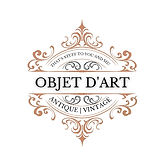Antique could be Victorian tin tea caddy unfortunately no makers name lovely decorative item some age related wear 13 cm tall 9 cm round we have a large collection of tins advertised may sell together or in groups etc please contact us for pricing etc
Tin tea caddies originated in Japan after the country opened to the world and imported tin plates from England during the Meiji period. Kiyosuke Yagi, the founder of Kaikado, was the first to create tin tea canisters, or chazutsu, in Japan. His handmade caddies were praised for their simple design and functionality.

Here are some other notable events in the history of tea caddies:
The term "caddy"
The term "caddy" comes from the Chinese word catty, which was a unit of weight used to measure tea.

Early tea canisters
Early tea canisters were made of porcelain and were shaped like ginger jars.

Tea chests
Tea chests were wooden cases with riveted metal edges that were used to ship tea. They were often filled with three canisters, with the center canister used for sugar.


Tea caddies as status symbols
Tea caddies were highly valued and often ornate, and were made from materials like wood, metal, tortoiseshell, pewter, brass, or copper. They were often locked to keep the tea safe.

Tea caddies in the Georgian and Regency periods
During these periods, tea caddies were produced in a variety of shapes and designs.
Tea caddies today
Modern tea chests are made of plywood with metal corners and are lined with aluminum foil and parchment paper to keep the aroma in.
Antique could be Victorian tin tea caddy unfortunately no makers name lovely dec
Stock No
589


































